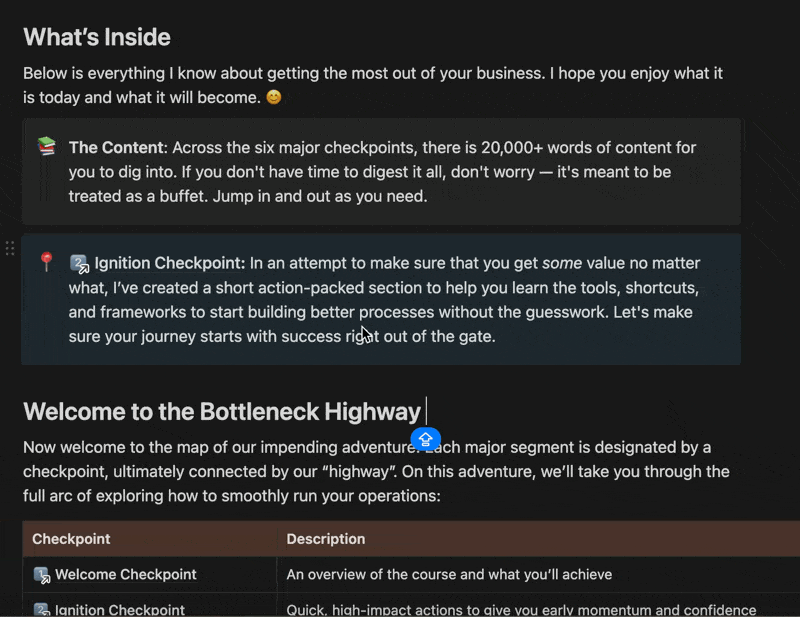Not subscribed? Sign up to get it in your inbox every week.


PRESENTED BY DELVE
🚀 Delve Raises $32M Series A to change compliance forever
Delve is shaping the future of compliance with an AI-native approach that cuts busywork and saves teams hundreds of hours. Startups like Lovable, Bland, and Browser trust our AI to get compliant—fast.
To celebrate, they’re giving back with 3 limited-time offers:
$15,000 referral bonus if you refer a founding engineer we hire
$2,000 off compliance setup for new customers
A custom Delve doormat for anyone who reposts + comments on our LinkedIn post (while supplies last!)
Thank you for the support—this is just the beginning.
PRESENTED BY THE BOTTLENECK
Ready to leap from “reliable doer” to the ops leader everyone counts on?
Your calendar is full. Your brain is fried. And somehow, your work still flies under the radar.
Here’s the truth: You don’t get promoted for working more. You get promoted for thinking like an executive.
Bottleneck Breakers is the system I used to:
– Trim 20 hours of busywork a week
– Fix the stuff that actually moved the needle
– And earn a COO title before I turned 30
🧠 No video lectures. Just drop-in systems that make you undeniable when promotion season hits.
Thanks to our sponsors who keep this email free. Interested in sponsoring these emails? See our partnership options here

Building a scenario checklist
Insight from LinkedIn
Simulation drills aren’t any good if you aren’t doing the bane of every operations manager—performance tracking.
It’s boring and repetitive, but essential. The best you can do is try to make it easier by creating a scenario checklist.
Step 1: Define the scenario and assign roles
Set the stage. What’s the problem? Who are the players? How does the drama unfold? If your checklist doesn’t tell a story, your trainees won’t be invested and they’ll be scrolling their phones when you’re not looking.

Example: Data Breach Response Simulation
Situation: Suspicious activity detected in the database.
Roles: Incident Reporter, IT Investigator, Communications Officer.
Goal: Contain the breach and notify stakeholders within 30 minutes.
You’ll likely have to make a few of these for each of the possible problems in the future. It’ll be like your catalogue of the worst-case scenarios but they’ll be very helpful.
Oh, since this is a scenario, you’ll have to choose players for the roles. Don’t let your participants scramble to figure out who’s doing what mid-scenario. Assign these upfront so your checklist becomes a playbook, not a guessing game.
The last thing you want happening is passing the ball to someone who’s unprepared for the task at hand.
Step 2: List tasks in order (Yes, Order Matters)
Write each task in sequential order so trainees can follow along without skipping steps. “Secure the data” should never come after “Report the breach.”
Unless you enjoy chaos. But if you don’t, here’s what a good sequence should look like:
Verify the alert and confirm the breach.
Notify IT Investigator to assess the extent of the breach.
Activate data containment procedures—limit database access immediately.
Document all actions taken in the incident log.
Draft initial communication for stakeholders and legal teams.
Review steps with compliance lead before sending out notifications.
Step 3: Create checkpoints early using a decision tree
Real-world scenarios don’t move in straight lines. Your checklist should include conditional paths, like “If the fire alarm fails, proceed to manual alerts.” You can set up checkpoints in any way you want to but I prefer using decision trees.
They’re simple, easy to do, and straight to the point. Think of it as a Choose Your Own Adventure book—but with less fantasy and more reality.
A simple flow on a decision tree should look like this:
Did the breach affect customer data? Yes → Notify affected customers. No → Proceed to internal review only.
Is the source of the breach identified? No → Continue investigating. Yes → Implement patch and document fix.
It answers the checkpoints well, and it’s as straight to the point as it can get.
Step 4: Test It Before You Trust It
Don’t debut your checklist during an actual training session. Run a rehearsal with a small group first.
Watch for gaps, confusion, or moments where someone whispers, “What now?” Then revise until it’s bulletproof—or at least resistant to friendly fire.
You’re now equipped to create a scenario checklist that’s less of a boring worksheet and more of a tactical toolkit. If compliance training is the necessary evil, then at least now you’ve got the devil’s playbook.






